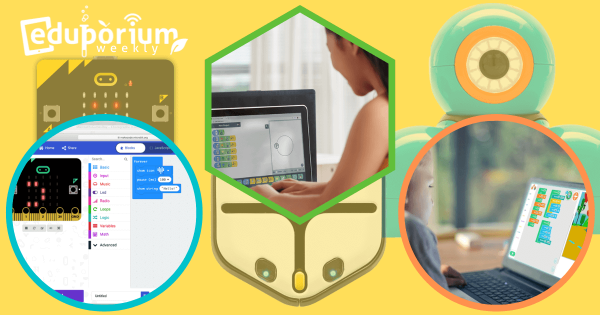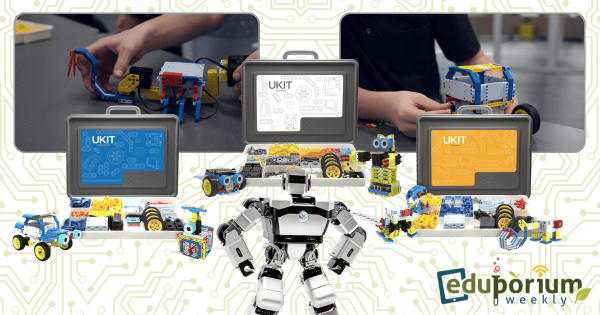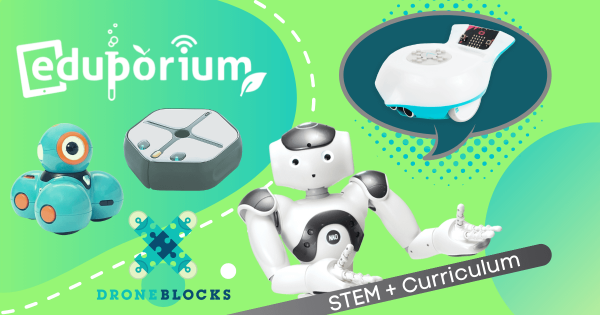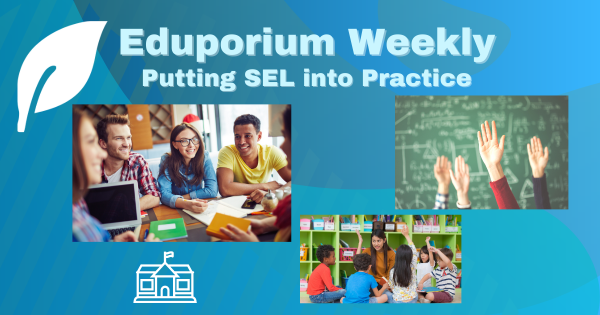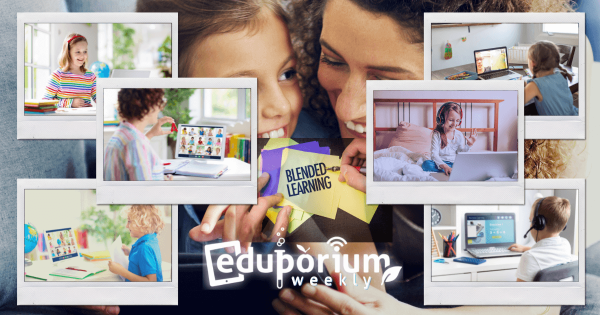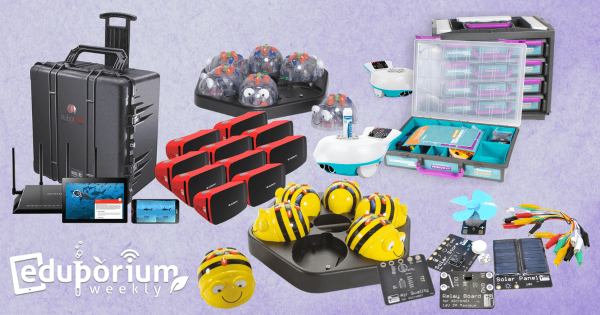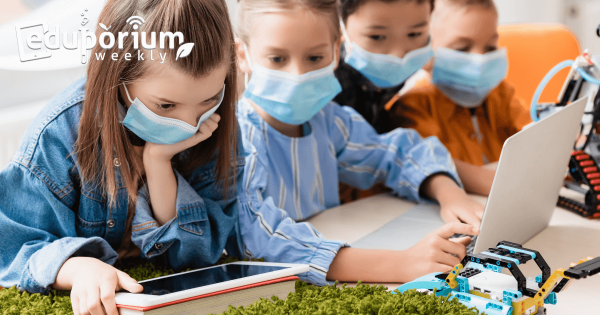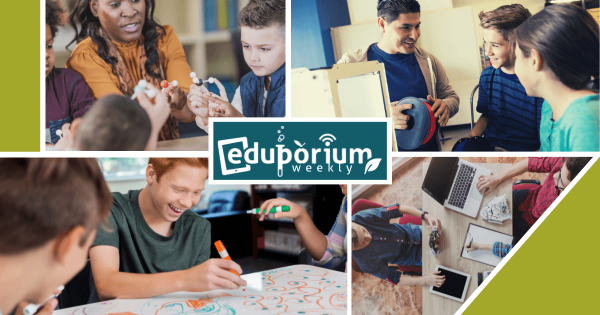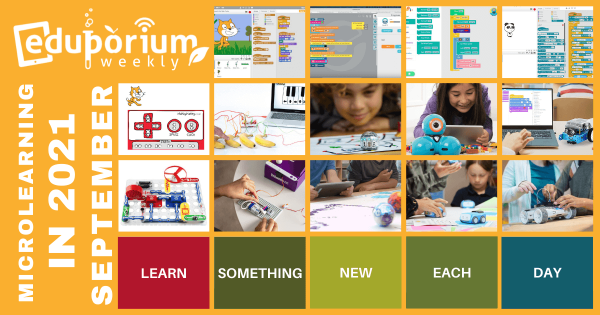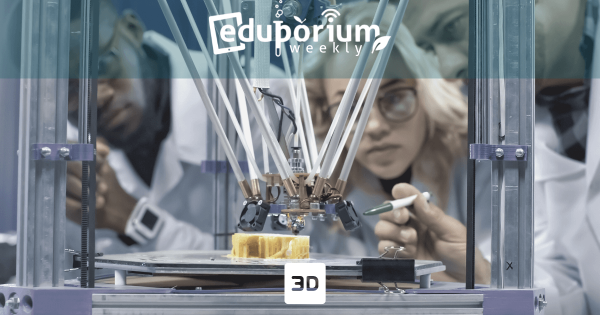For the bulk of 2020 and 2021, learning—and STEAM lessons—happened largely online and, though many children are digital natives, navigating this era of education created plenty of new and unique challenges. Now, as we strive to ensure hands-on STEAM experiences are always accessible, kids can code almost anywhere with these tools, which is key for the summer.
Eduporium Weekly
Our longest running current blog series, the Eduporium Weekly is your source for relevant education topics. Whether it's related to EdTech, STEM, SEL, makerspaces, soft skills, equity, CTE, or any number of other things, you are sure to find some relevant content here. Our team remains committed to providing intriguing and up-to-date opinions and perspectives on the most important topics—whether they're technology-based or not. Every week, we share our thoughts about those key topics in education. Giving educators a Saturday morning read, many of our Eduporium Weekly posts reflect recent happenings, important updates, or, sometimes, some fun revelations. We're also very fortunate to serve a community of such committed educators. For that reason, we strive to keep our thoughts and content fresh. And, this section of our blog is a great place to go for just that.
Whatever is happening in education, we believe our committed team members help educators adjust. As we've seen, technology has a place in all types of learning—as long as educators integrate it strategically. As debates and discussions in STEAM and general education evolve, we adapt this content to continually educate, inform, and entertain. Our perspective may be a bit unique but our collective expertise on these topics is always improving. We also encourage you to browse the pages or search for a topic of your interest on the left of your screen. We certainly take pride in being up to date with what teachers are experiencing. From our entire team, we hope this content truly provides you with guidance and inspiration. Check back every weekend, as well, for the latest edition of the Eduporium Weekly.
-
Eduporium Weekly | Get to Know the UBTECH Education Line
Each of the UBTECH Education robotics kits—Beginner, Intermediate, and Advanced—are very engaging for students, offering opportunities for hands-on engineering, coding, and problem-solving using the unique components and sensors. This week, we’re breaking down each of the kits, including what comes in the packages, the curriculum, and more. -
Eduporium Weekly | STEM Kits with Curriculum
Whether it’s robotics, circuitry, engineering, or something else, there are obviously a myriad of STEM solutions available to today’s K-12 teachers. With all these options, they often look for something to differentiate them and, regularly, that’s the curricular component. With the NAO V6, Dash Robot, Finch 2.0, and more, they can get those key guides included. -
Eduporium Weekly | Putting SEL Into Practice
Many teachers still hope to recapture normal instructional experiences and many of them have also taken on added responsibilities because of all new vacancies. And, though, in some districts, teachers have some official SEL guidelines to use, there aren’t concrete procedures in play in many others. So, if they choose to commit to SEL, they may be doing it on -
Blended Learning Benefits and Strategies for Teachers
Blended learning is an effective instructional strategy for teachers and students. Even more so since the onset of remote and hybrid learning, blended models have been both necessary and effective. Though it’s not as common as it used to be, it still happens in many schools and it’s highly effective for students who learn differently. -
Eduporium Weekly | 5 New STEM Products on our Store
From the Bee-Bot and Blue-Bot robots for early education coding to the incredibly effective and immersive RobotLAB VR Expeditions 2.0 kits, some of the newest STEM products on our store pack a big punch in the classroom. Head inside to learn more about these five new additions and how they can help enhance hands-on instruction. -
Eduporium Weekly | STEM Education in the Pandemic Era
Whether it’s classroom teachers or challenges students themselves are facing, it’s a different environment when it comes to STEM instruction. Since the value of of these classes lies in their hands-on nature, it’s been quite a physical and mental adjustment trying to provide students with the experiences they need. -
Eduporium Weekly | The School Library as a STEM Hub?
As they’re becoming an increasingly important part of 21st century schools, libraries are evolving to better serve the needs of modern students. They’re being transformed into instant information hubs, innovation centers, and makerspaces as they grow into a tool for 21st century learning—breaking away from past standards. -
Eduporium Weekly | Using Microlearning in 2021
Microlearning has emerged as a more widely talked about form of instruction. Though previously uncommon in K-12 education, this method has been used in other areas. By definition, microlearning consists of much shorter lessons filled with content that’s straight to the point with teachers working to eliminate any potential ‘filler’ content. -
Eduporium Weekly | Integrating 3D Printing in Education
Today, 3D printing has all sorts of positive implications in many different industries, including medical, science, military, and more. It’s with these innovative machines that anybody can create objects that are precisely crafted to specific needs. By solving challenges with 3D printing, students can get ready for the future and learn some key skills.




